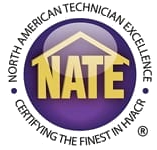It isn’t easy to even imagine a house in the modern world with no refrigerator, but that was a reality as recently as 200 years ago. In those times, refrigerators were primitive and incredibly rare to own. People had to use other methods of food preservation before the 1800s because refrigerator units did not exist.
Before Refrigerators
Before the invention of the modern-day refrigerator, people still needed to preserve food for later consumption. So how did they do this?
Drying, Salting, and Fermentation
A common preservation technique, dating back as far as 12,000 B.C., was drying food in the sun. Ancient civilizations also have been documented curing food in salt and spices, smoking meats and fish, and fermenting food underground or in containers. Pickling certain foods in acidic brine were also popular.
While all of these methods are still used today for certain foods or snacks, it is not as necessary as it once was for actual survival. For example, people today will dry fruits or vegetables and smoke-cured meats to enjoy as jerky.

Ancient Cooling
People who lived near lakes or in cooler climates used methods of cooling and preserving food that took advantage of natural elements. Freezing food in lakes or cold streams was a popular method.
Another method was digging out cool preservation caves or cellars if water was warm or entirely unavailable. In even colder climates, especially during the winter, people would dig out ice banks of snow drifts and store their food in them, hoping that animals would not come to scavenge the saved food.
Egyptians would cool water by filling earthen jars and placing them on the roofs of their homes, exposing it overnight to the cold air. Mesopotamian civilizations would harvest and store ice in ice houses as early as 1780 B.C.
Some writings suggest that ancient Chinese, Greek, Roman, and Hebrew civilizations buried snow and ice in storage pits, much like storage cellars, and covered it with various insulators, including straw and sawdust. They would then take the snow or ice they needed to preserve food or cool drinks.
The First “Refrigerator”
It was in the early 1800s that engineers started thinking of more practical ways to store and preserve food. Ice houses were popular, especially in rural areas. An American engineer named Thomas Moore invented the first “refrigerator” and coined the term. His invention was a mobile, insulated icebox, but it had the same general shape and function as modern-day refrigerators.
Years later, in 1834, a scientist named Jacob Perkins built and patented the first functioning refrigerator. Coincidentally, Perkins is also credited with laying the groundwork for heating and cooling systems.
Ten years later, physician John Gorrie improved upon a previous design. It was a collaboration between the works of physicist William Cullen and Oliver Evans. This is what ultimately became the model for the modern-day refrigerators that are seen in every home. The appliance was far from perfect, however.
Trial and Error
Early refrigerators were dangerous. They used a vapor compression cycle that used liquid ammonia and other toxic gases like sulfur dioxide and methyl chloride. Due to chemical leakage or fires, frequent fatal accidents forced a collaborative effort to find a safer alternative.
During the 1920s, DuPont developed and marketed that alternative: Freon. This became the new standard for refrigeration technology and appliances and remained that way for over 50 years. Starting around this time, in the 1940s, most units now contained separate freezer compartments.
During the 1970s, scientists discovered that the synthetic refrigerants in Freon contributed to the depletion of the Earth’s natural ozone layer. As soon as it was understood that ozone depletion was a major environmental crisis, world governments banned Freon and other similar chlorofluorocarbons (CFCs) from being used. Still, it would be decades before the devices using them would be out of service. By the mid-1990s, all new units used less harmful refrigerants.
The solution came in the form of safer alternative refrigerants, along with highly efficient machinery that requires much smaller amounts of chemicals in the first place. As a result, most appliances in the home will not use chemicals that can be toxic if the refrigerator were to leak, and the units now meet current environmental standards.
How Do Refrigerators Work?
In the refrigeration cycle, five basic components make up every appliance:
- Condenser coils on the outside of the unit
- Evaporator coils on the inside
- An expansion valve
- Fluid refrigerant
- A compressor
So how do they work to preserve your food and cool your drinks?
First, the compressor constricts the refrigerant vapor. This raises the pressure and pushes the refrigerant into the coils outside the refrigerator.
- Once the hot gas in the coils meets the cooler external temperature of the appliance, the refrigerant becomes a liquid and flows into the coils within the refrigerator.
- Still at high pressure but now a cooler liquid, the refrigerant absorbs any heat it can find within the refrigerator, which causes the air in the unit to cool down.
- After absorbing the heat, the refrigerant evaporates into a gas and returns to the compressor, where the process starts over and repeats indefinitely.
The refrigerants are chemicals that evaporate at extremely low temperatures, so “heat” to these chemicals is still what humans would generally consider cold. But, as it absorbs the heat it’s reacting to, it evaporates, to cycle back through the coils and compressor of your refrigerator.
Modern-Day Marvel
Refrigerators today come in a variety of styles, configurations, and sizes. In addition, they are customizable in every way, from internal temperature to Bluetooth connectivity. In just 200 years, the refrigerator has become possibly the most necessary component to modern society, preserving your food and keeping your drinks nice and cold.
ECM Air Conditioning, with its headquarters located in Boynton Beach, FL, provides air conditioning services within Palm Beach County, Broward County, Martin County, and St. Lucie County. If you’re looking to have a new HVAC system installed, we’re on-call and ready to assist you. So if you’re in need of an HVAC installation, don’t hesitate to contact us today to schedule an inspection! Our HVAC installation experts will check your ductwork, measure, check wire sizes, and more before making recommendations to ensure maximum efficiency and comfort. Call us at 561-295-1763 or contact our HVAC installation team online by clicking here.

















